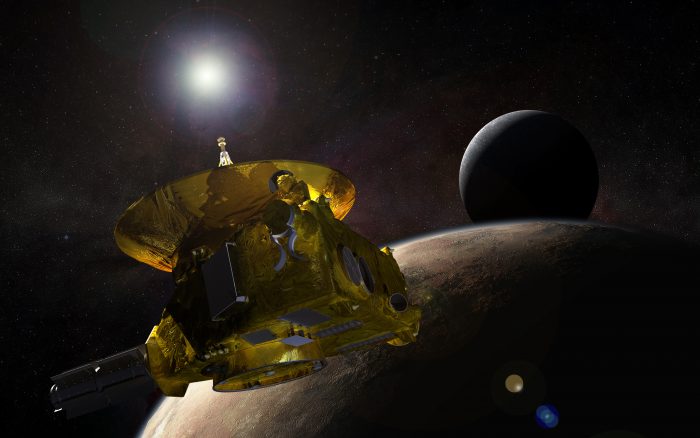How we got to Pluto
As recipient of one of the Secretary’s 2017 Distinguished Scholar Awards, Dr. Michael Neufeld, will discuss how NASA’s New Horizon spacecraft reached the outer limits of our solar system.

The New Horizons mission is helping us understand worlds at the edge of our solar system by making the first reconnaissance of the dwarf planet Pluto and by venturing deeper into the distant, mysterious Kuiper Belt – a relic of solar system formation. (Artist’s rendering courtesy NASA)
Dr. Michael Neufeld, Senior Curator in the Space History Department at the National Air and Space Museum, will receive one of the two 2017 Smithsonian Distinguished Scholar Awards. The award celebrates excellence in all branches of Smithsonian scholarship by honoring the sustained achievement of two outstanding Smithsonian scholars each year—one in the sciences and one in the humanities. The second winner will be announced by the end of the year.
Mike Neufeld came to the National Air and Space Museum as a mid-career Verville Fellow in 1988, and he has held appointments there in both the Aeronautics and Space History departments. He is probably best known for his extensive research into the life and times of Wernher von Braun, tracing the history of spaceflight from the conditions under which the V-2 missile came into existence in Nazi Germany through von Braun’s pioneering work on the United States’ first space satellite Explorer 1 through the Apollo program manned lunar landings. He has also made major contributions clarifying the historical issue of strategic bombing, and more recently, examined many aspects of NASA’s planetary missions, particularly the New Horizons mission to Pluto. He is the author of three prize-winning books, the editor of five more, and has published scores of articles, both in scholarly journals and in the popular press.

Dr. Michael J. Neufeld is a Senior Curator in the Space History Department. of the National Air and Space Museum. (Photo courtesy NASM)
Mike will present his lecture, “How We Got To Pluto,” Thursday, Nov. 30 at 11 a.m. in the National Museum of the American Indian’s Rasmuson Theater. In his lecture, he will discuss the July 14, 2015 fly-by of the (recently demoted) dwarf planet Pluto by NASA’s New Horizons spacecraft, which transmitted spectacular images and data. In hindsight, this mission seems inevitable—the capstone to the U.S.’s pioneering exploration of the Solar System. But it took 17 difficult years to get from the first proposal to launch day in 2006. On the way there were many course changes and three outright cancellations. Far from inevitable, the Pluto mission was saved several times by dogged advocacy, protests by scientists and the public, and timely interventions by Sen. Barbara Mikulski and the National Academy of Sciences. This story, with all its twists and turns, provides a fascinating case study of how space science policy was made around the turn of the 21st century. For those who cannot attend the lecture in person, it will be webcast.
Posted: 27 November 2017
-
Categories:
Air and Space Museum , News & Announcements , Science and Nature , Spotlight



